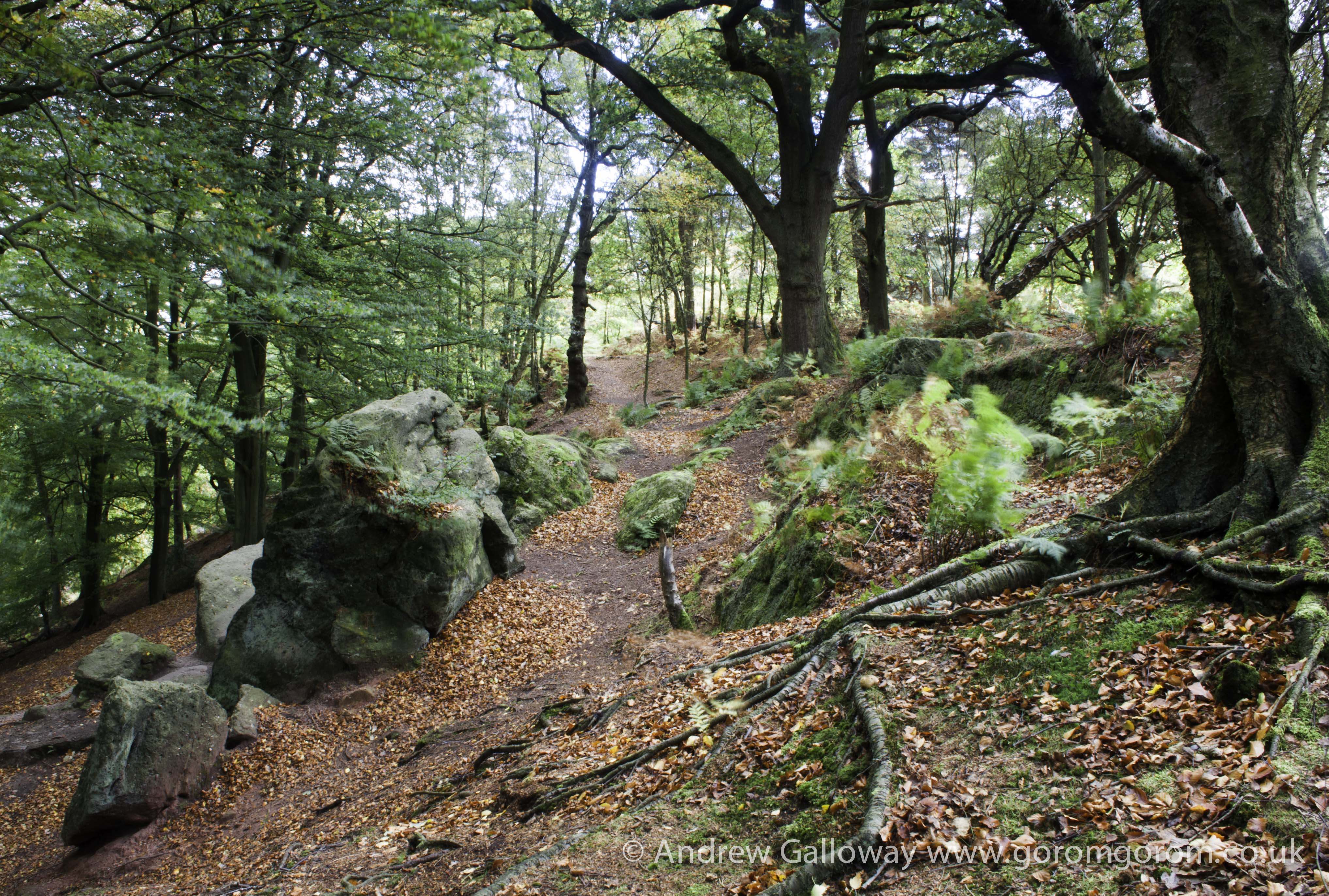So, while the light fails
T.S. Eliot
On a winter’s afternoon, in a secluded chapel
History is now and England
Many years ago, before the onset, or so it would seem in retrospect, of cultural consumerism, the unbridled self-gratification of Thatcherism, the ubiquitous narcissism of social media, and all the other ills of the neoliberal dream, on a russet-red sandstone escarpment on the eastern edge of the Cheshire Plain stood a ten year old boy: precocious, intelligent, a bit of a misfit, crowned with a mop of white-gold hair, dressed in a rather tatty C&A jumper, flared corduroy trousers and Start-Rite sandals. Offspring that he was of the homogenous council estate tucked away as an afterthought at the southern limit of a hazy industrial city, he none-the-less yearned for magic and enchantment, in pursuit of which he now gazed with unbridled awe and wonder into a slim chasm cut some seventy feet into the jagged rock below, a dog-eared copy of Alan Garner’s The Weirdstone of Brisingamenclasped firmly in his slightly grubby hand.
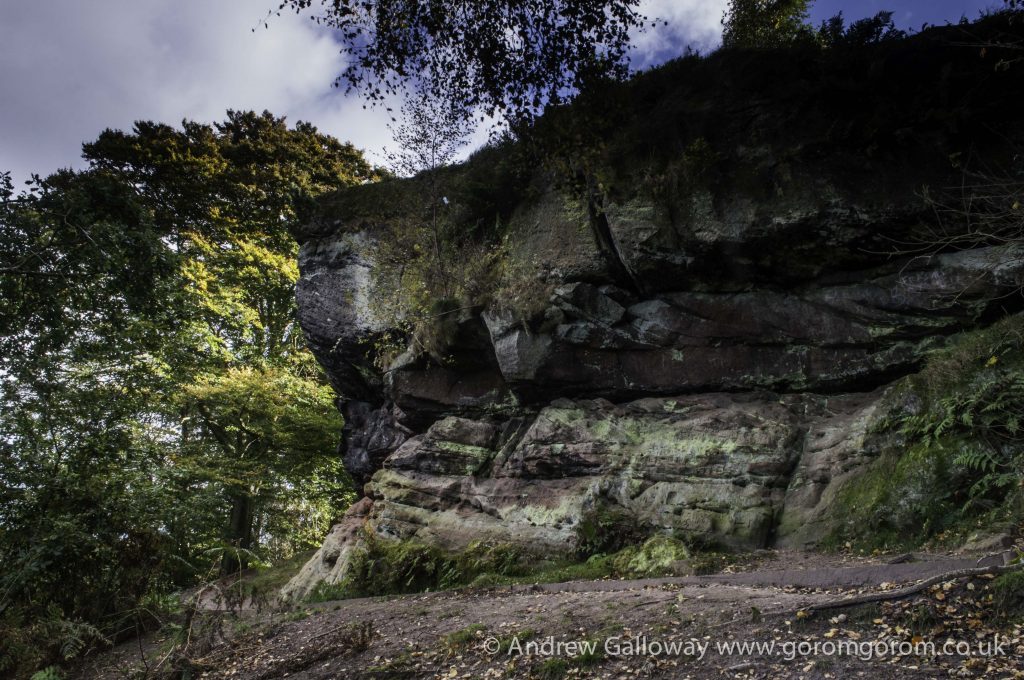
As I recall, the book had been given, or lent (though possibly never returned) to me by a school pal named Stewart whose father taught at a school in the village of Mobberley, Cheshire, a rather bourgeois settlement to the south of what is now Manchester Airport most famous for being the home of the ill fated George Mallory, who died attempting to summit Mount Everest in 1924. Why one of my school pals from a rather run down primary school on the southern fringes of the city of Manchester should have a father teaching in such an esteemed location I cannot remember, but I do remember being taken to the school one day to look for ‘conkers’ which had fallen from the lofty horse chestnut trees that encircled the school. Perhaps my pal’s dad was the gardener or something like that and I’ve got it all wrong[i]. Notwithstanding, it was he, the father that is, that introduced me to the book, the legend of Alderley and vicariously, the works of Alan Garner.
The Weirdstone of Brisingamen, a children’s novel about a geographically displaced brother and sister, Colin and Susan, who encounter Cadellin, the Wizard of Alderley and are pursued through the Cheshire landscape by the forces of evil, was the first book I had an emotional relationship with. I was not an avid reader as a child. Having a propensity for attention deficit long before the advent of Ritalin, I preferred picture books. Raymond Briggs and Jan Pienkowski were particular favourites. But the progressive social policies of Manchester City Council’s Education Committee of the 1970’s meant that books were regularly thrust into my hands, and by the time I entered lower Primary I had an above average reading age. For a child with a tendency towards visual dominance, the Weirdstone appealed not only because its narrative was particularly visual but because the book also contained maps, two of them, which gave me enough confidence to face head on the pages of daunting text, knowing that should I lose my way, I would have the maps to help locate myself.
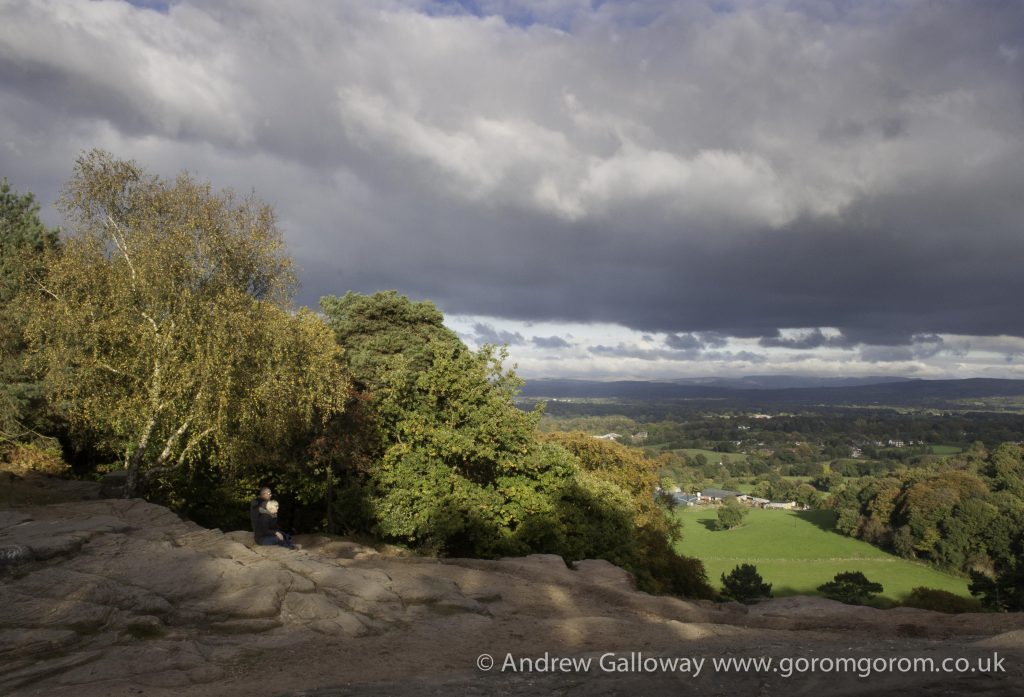
The Weirdstone and its sequel, The Moon of Gomrath were Alan Garner’s first two books, most decidedly intended for children, published in 1960 and 1963 respectively. Although perhaps somewhat dated in terms of characterisation compared to more recent popular children’s fiction, the books had a compelling energy and mystery that appealed to the adolescent mind. More importantly for me, they were rooted in a verifiable location; and not merely the broad brush of a fictional narrative located in a particular town or city, which might as well have taken place in any town or city, as with, for example, Holden Caulfield’s relationship to New York in J D Salinger’s The Catcher in the Rye, but a narrative entwined within substantive geographical features, which were as much a part of that narrative as the human characters who inhabited them. The Weirdstone of Brisingamenand The Moon of Gomrathcould only have taken place on Alderley Edge, a prominent ridge of sandstone escarpment some three kilometres long and reaching over a hundred and ninety metres above sea level, which all the more engaging for my younger self was less than ten miles from my parents house, and easily reachable by bicycle.
“And late one Sunday afternoon at the end of the first week in January, Colin and Susan climbed out of Alderley village, pushing their bicycles before them. They walked slowly, for it was not a hill to be rushed, and the last stretch was the worst – straight and steep, without any respite.[ii]”
With my bicycle chained to an old fence post and the headlamp employed as an improvised miners lantern, I would spend many hours exploring the near surface adits and passageways of the old mines. Locations such as Devil’s Grave, Pillar Mine and Doc Mine were familiar places for adventures, following in the footsteps of Colin and Susan. Upon the Edge I discovered that where Colin and Susan had “walked down the trench, and were rather disappointed to find that it ended in a small cave, shaped roughly like a discus, and full of cold damp air,” there was in fact, upon Stormy Point, among the towering Scott’s Pines, such a cave where, “there were no tunnels or shafts: the only thing of note was a round hole in the roof, about a yard across, which was blocked by an oblong stone.”The Wizard Inn with its “white walls and stone roof”, and above the door a painted sign showing “a man, dressed like a monk, with long white hair and beard[iii]” actually stood alongside the woods on the Macclesfield Road. The Weirdstone was a picture book then, except that the pictures existed in the landscape.
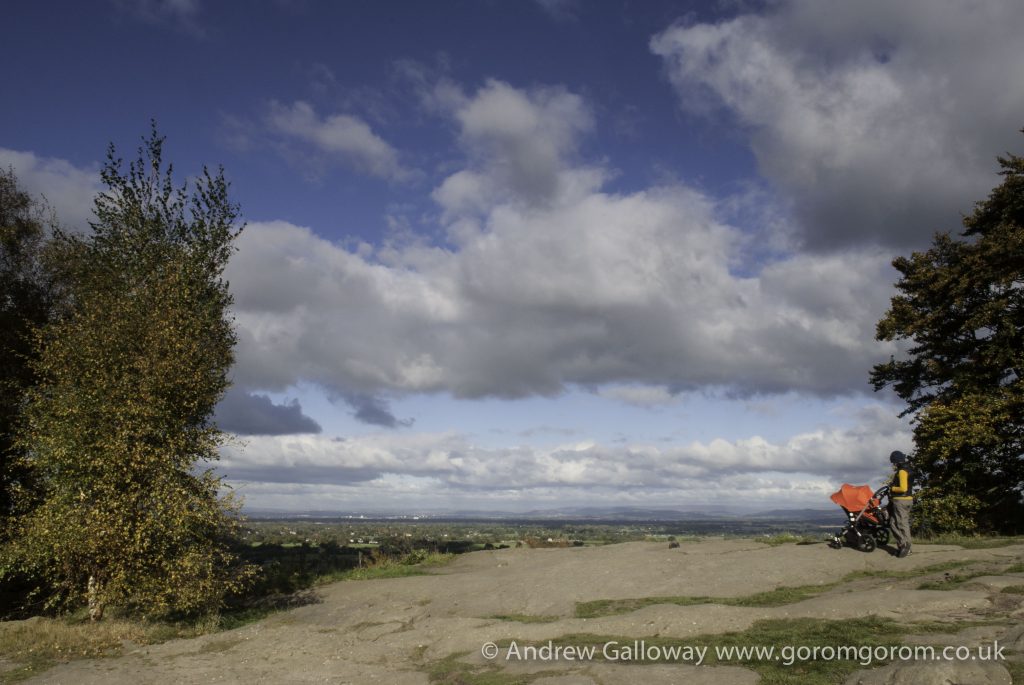
The story of the Weirdstone was partly inspired by the Legend of Alderley, the first known publication of which was in 1805 in the Manchester Mail. A newspaper correspondent is thought to have obtained the story from a servant of the local Stanley family, a Thomas Broadhurst, also known as “Old Daddy”. However, Parson Shrigley, the Clerk and later Curate of Nether Alderley was believed to have recounted the tale as early as 1753, himself believing the story to have originated a good eighty years prior to his telling.[iv]
The fable tells of the meeting early one morning on the Edge of a farmer from Mobberley and a tall, strangely dressed older man, who attempts to buy the farmers milk-white horse. Preferring to take his chances at Macclesfield market, the farmer is disappointed to find that his horse will not sell. Upon returning to the Edge that evening the farmer again meets the stranger and having reluctantly agreed to his proposal of sale, is led by the old man to a pair of iron gates mounted in the rock, the entrance to a large cavern deep within the hillside. Here the farmer is shown countless men lying in enchanted sleep, each but one with a horse by his side, his own mare to make the numbers complete. The farmer is richly rewarded with jewels and gold for his troubles and led from the cavern, the iron gates closing behind, never to be seen again.
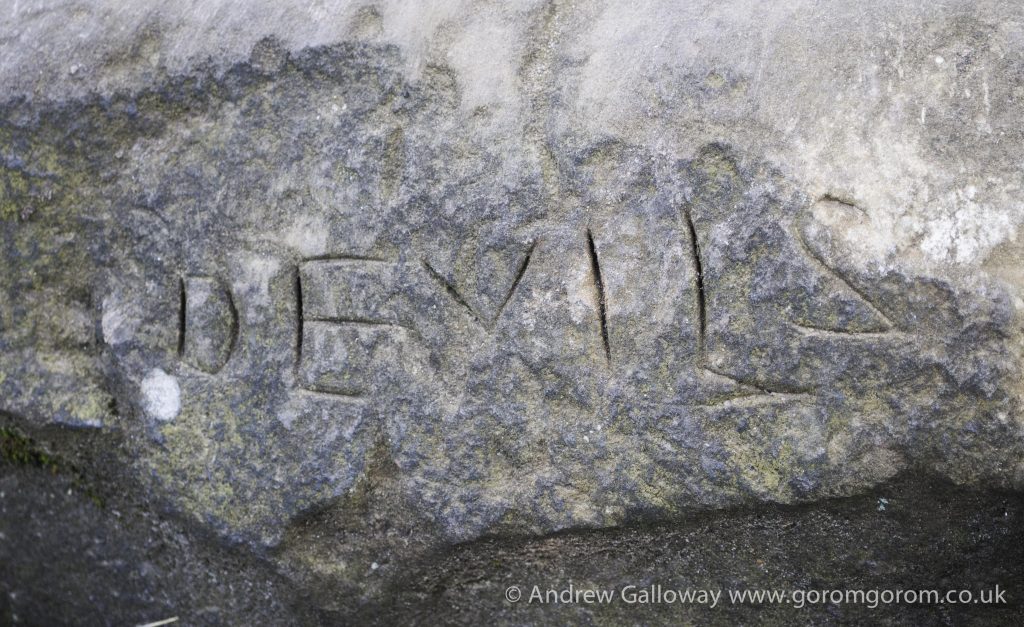
The tale is not unique to Alderley. The myth of a hero and his knights entombed within a particularly striking feature of the landscape has been associated with several locations in Britain, notably the Eildon Hills of the Scottish borders, as recounted by Sir Walter Scott in his Ballad of Thomas the Rhymer[v]and the precipitous face of Y Lliwedd, which forms part of the Snowdon Horseshoe range in North Wales[vi]. In the Welsh version of the tale a shepherd is seeking a lost sheep on the slopes of Y Lliwedd when he stumbles across a small cave, known locally as Ogof Llanciau Eryri. Letting his curiosity get the better of him he enters the cave to find, as in the Alderley tale, an army of sleeping knights.
Although never specifically mentioned, is has been assumed by various authors and by Garner himself, that the Alderley knights were the companions of one Arthur Pendragon, the bearded stranger met by the Mobberley farmer his well known magical companion, of whom Gerald of Wales referred to as Ambrosius[vii] but whom we know more commonly as the magician Merlin, and despite Alan Garner’s decision to name his wizard of his book Caddelin the legend of Alderley is in folklore often referred to as the legend of King Arthur and his knights.
Such geomythological tales are often the remnants of a folk oral tradition, the purpose of which, for ancient communities, was to make sense of prominent geographical features or to facilitate the remembrance of a specific event in the oral history of the community. Often these stories were inspired by an emotional human response to the landscape. This emotional response may be described as a subliminal ‘sense of place’ or what is often referred to as genius loci, a term often used by the 20thCentury artist Paul Nash to describe the essence of his work, and what the author Merlin Coverley describes as “an eternal landscape underpinning our own”[viii]. Although unable to describe my emotions in such a manner as a child, for my adolescent self, both The Weirdstone of Brisingamen and The Moon of Gomrath evoked the genius loci of Alderley and the surrounding landscape, both books being firmly rooted in the mythology and landscape of eastern Cheshire. As Neil Philips puts it, “The importance of place to these two books cannot be over emphasised. Alderley is not simply the setting: it shapes the stories.[ix]” Or as Garner himself states in the notes to The Moon of Gomrath, “every thing and place mentioned (…) does exist, although I have juggled with one or two local names.[x]”
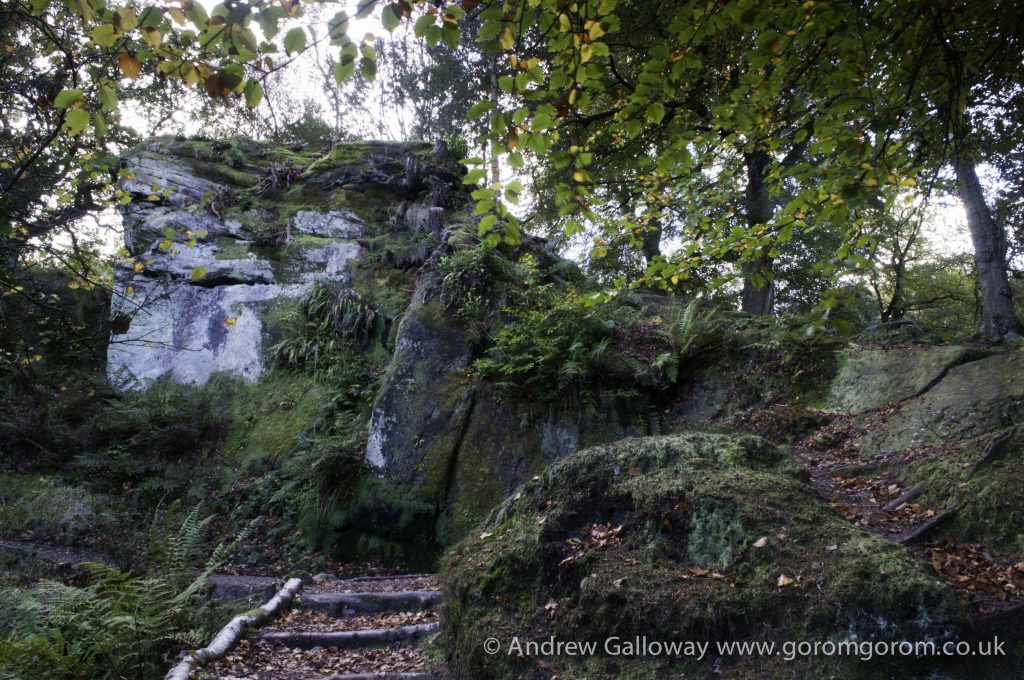
More than this the landscape of the stories is embodied with its own sentience, a consciousness that drives the narrative. Take for example the following passage from The Weirdstone:
“They all looked. A mile away, above the crossroads on Monk’s Heath, a grassy hill stood out above the land. It was like a smaller Shuttlingslow – or a tumulus. It had the tumulus’s air of mystery; it was subtly different from the surrounding country; it knew more than the fields in which it had its roots.[xi]”
The union of myth and landscape was to become the defining characteristic of Alan Garner’s writing, and in subsequent works, such as The Owl Service, which won for Garner the Carnegie Medal and later Red Shift, the relationship between landscape and mythology, and the psychological effect of these twin forces upon the lives of the characters who inhabit the stories, became increasingly complex, possessing an emotional maturity, which drew into question the idea of Garner as being ‘merely’ a children’s author. Always seeing the past as a key to the interpretation of the present, Garner employed the juxtaposition of myth and landscape to make a dissection of contemporary society, as Neil Philips states, “Garner is one of the most able of the writers who have sought (…) to explore the disjointed and troubled psychological and emotional landscape of the twentieth century through the symbolism of myth and folklore: myth is used as a diagnostic tool in the examination of contemporary ills.”[xii] As already indicated, for my younger self these concepts were if anything, subconscious, leaving only an emotional response to what I encountered both in the pages of the books and on the hills above Cheshire. But the very power of this emotional response, its hypnotic appeal, cannot be overstated.
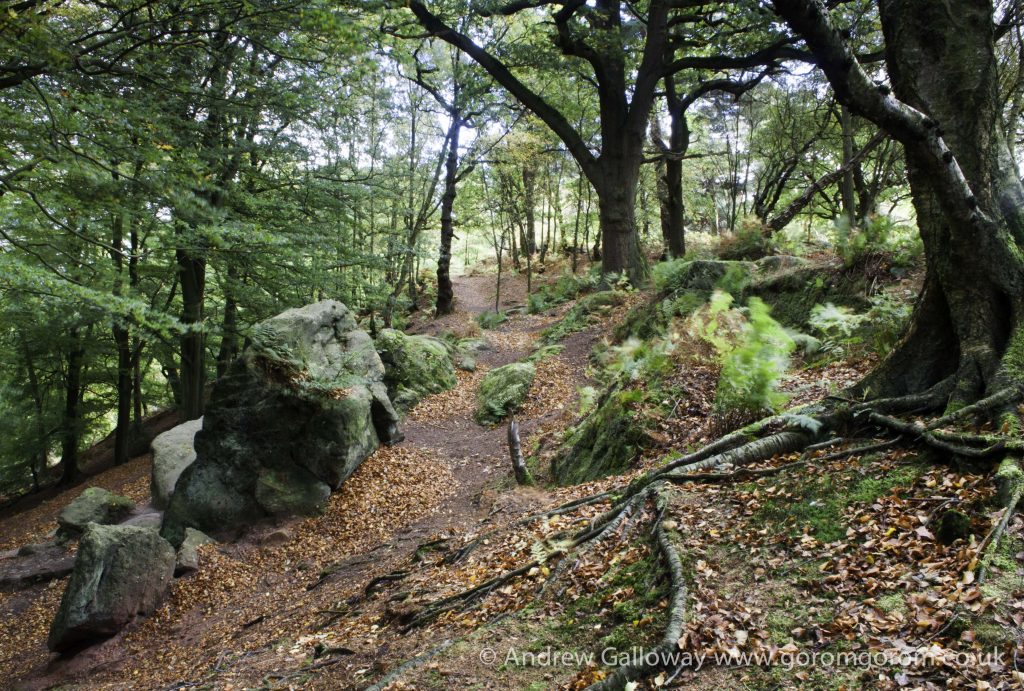
[i]With the wonders of the internet I discover that the school did indeed exist and was in fact an ‘Approved School’ for boys aged between thirteen and fifteen and under the control of Manchester City Council, which makes perfect sense. The school closed in 1986 and is now a Health Spa. Thus the gentrification of North Cheshire marches on.
[ii]Alan Garner, The Weirdstone of Brisingamen, William Collins Sons & Company Ltd 1960, pg99.
[iii]Ibid. pg24
[iv]Stanley, L. Alderley Edge and its neighbourhood, Swinnerton, 1843, pg25
[v]Ibid. pg26
[vi]Sir John Rhys, Celtic Folklore: Welsh and Manx(Clarendon Press, 1901) pg.660 as referenced by Jim Perrin, Snowdon, The Story of a Mountain, Gomer Press Ltd, 2012.
[vii]Gerald of Wales, The Journey Through Wales, Book II, Chapter 8, translated by Lewis Thorpe, Penguin Books, 1978.
[viii]Merlin Coverley, Psychogeography. Pocket Essentials, London 2010.
[ix]Neil Philip, A Fine Anger, a critical introduction to the work of Alan Garner, William Collins Sons & Co Ltd, 1981, pg13.
[x]Alan Garner, The Moon of Gomrath, Harper Collins Ltd, 1963, pg187.
[xi]Alan Garner, The Weirdstone of Brisingamen. Op. cit. pg219.
[xii]Neil Philip, Op. cit. pg21.

